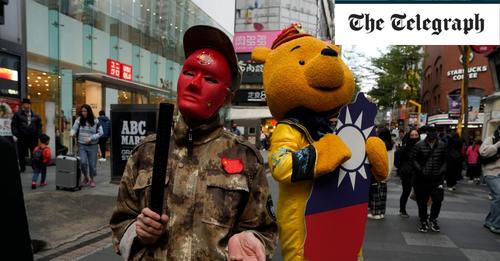
Christopher Harding in The Telegraph is first off the blocks with a newspaper review of my new book, Rebel Island: The Incredible History of Taiwan, calling it “a compelling portrait of a perennially fragmented place.” Article here (paywalled).


Christopher Harding in The Telegraph is first off the blocks with a newspaper review of my new book, Rebel Island: The Incredible History of Taiwan, calling it “a compelling portrait of a perennially fragmented place.” Article here (paywalled).

Leila Roine (Lea Joutseno) is shortly to marry her engineer fiancé Lauri Honkatie (Tauno Majuri), and so is conducting the traditional ceremonies of a 1940s Finnish bride-to-be, which apparently includes feeding letters and photographs connected to her former boyfriends into the fireplace. But as she confesses to cousin Mirjami (Kaija Rahola), arriving for the nuptials, she still carries a torch for Esko (Olavi Reimas), an impoverished poet.
Meanwhile, Lauri is fighting off his ex Asta (Hanna Taini), who arrives at his house to plead with him not to marry Leila, but instead to run away with her. The much-missed Esko shows up at Leila’s to present her with a poetry collection dedicated to her, and makes a similar offer to elope.
So, both bride and groom are facing last-minute temptations, but each of them nobly resists. Leila politely declines Esko’s offer, and they part as friends, but is then subject to an elaborate deception by Asta, who persuades her that she and Lauri are not only still an item, but actually betrothed. Mirjami can’t talk her out of it (because Mirjami has been tied to a chair), and Leila gets the wrong end of the stick when she calls a hotel and hears that Lauri is scandalously there…. Although in truth he is innocently lunching with his mother.
With all the parties eventually checked into the same hotel, a series of misunderstandings soon ensue. Lauri befriends Esko, and confides in him about the inconstancies of women, unaware that Esko has been busily trying to get inconstant with his fiancée. With everything liable to fall apart, the Roine family housekeeper Salli (Hilppa Ilvos) helps matters along by enlisting a bunch of kids to let off smoke bombs, propelling everybody into the arms of their correctly mandated future-spouse, including Esko and Mirjami, who have fallen for each other.
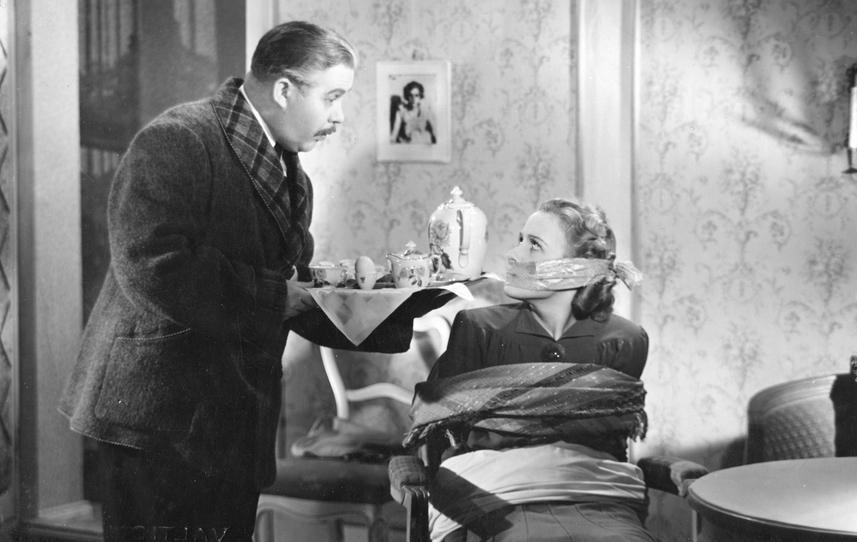
Morsian yllättää was the first collaboration between director Valentin Vaala, writer Kersti Bergroth (of Rich Girl fame), and actress Lea Joutseno, who is credited in some quarters as a co-writer – one suspects that modern-day writer’s union rules might prefer to credit her as an executive producer, since saying “What about a farce where everybody gets confused in a hotel?” hardly constitutes an “original” idea. Whatever was done by whoever, this triumvirate of Finnish film movers and shakers would go on to make several more comedies in the 1940s, including With Serious Intent (Tositarkoituksella, 1943) and The Girl and the Gangsters (Dynamiittityttö, 1944).
Shot largely on studio sets to escape the winter of 1941, and hence replicating many of the tropes and set-ups of a dozen other farces that had originally been written for the stage, the film was damned with faint praise in Uusi Suomi, the reviewer for which deemed it “harmless” and mercifully lacking in any actual surprises. Toini Aaltonen in the Suomen Sosialidemokraati instead distinguished something more enduring: a lightness of tone and snappiness of naturalistic dialogue that made it more than the sum of its parts. Paula Talaskivi, the only Finnish 1940s critic whose opinion really counts for posterity, called it a “cheerful frolic” and praised it for what she saw as its “piquant note of parody” – in other words, she saw it not as yet another farce, but a commentary on all the others.
Posterity has brought a mixed memory. Aune Kämäräinen in Uusi Suomi in 1980 commented on its TV broadcast that “we no longer laugh at the same things today as we did in 1941”, nevertheless pleading its case as a shining example of a particular kind of film that needed to be appreciated in its historical context. Other contemporary critics have been similarly forgiving, with Tapani Maskula in the Turun Sanomat noting that Joutseno’s star power gave Hollywood screwball comedies a run for their money, and Pertti Avolakin in the Helsingin Sanomat observing that modern viewers truly needed to appreciate that this was a comedy made in wartime (or its immediate aftermath) specifically to distract and entertain the women of the home front.
One of the little rascals with smoke bombs was played by Kalevi Koski, previously seen in The Man from Sysmä (1938). He would leave child-acting behind to become an orthodontist and professor of dentistry, becoming the first person in Finnish academia to write his thesis in English.
Jonathan Clements is the author of A Short History of Finland. He is watching all the Finnish films, so you don’t have to.
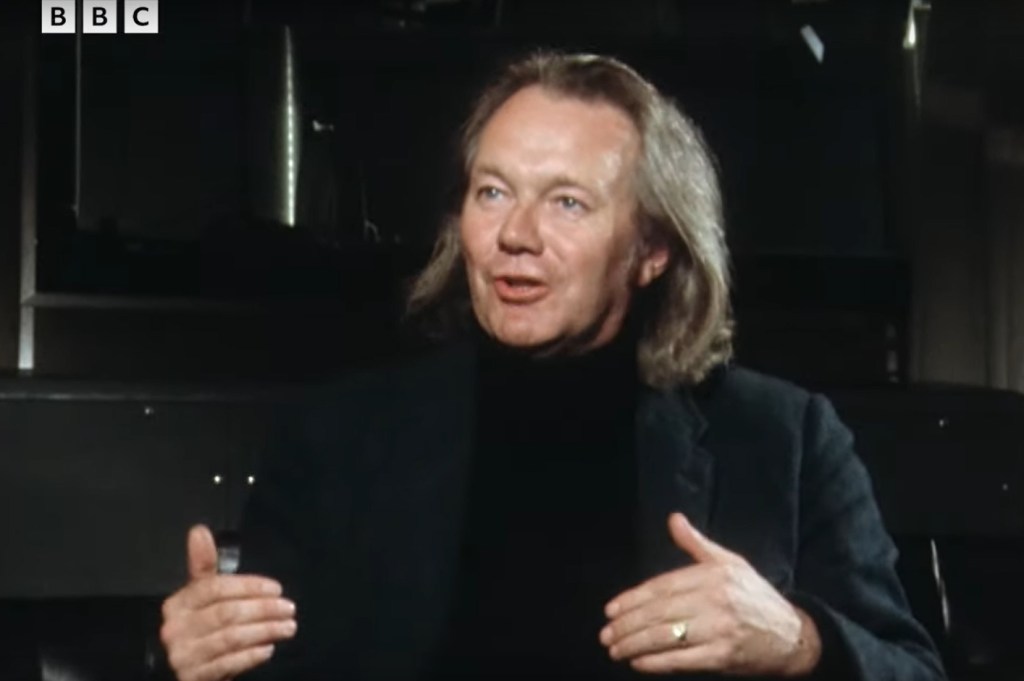
Articles about the late Michael Bakewell struggled to contain his career high-points. He had, after all, been the BBC’s first Head of Plays, appointed in 1963 to add a touch of class to broadcasting. He arrived at the television wing after almost a decade directing radio for the “Third Programme”, and continued to oversee radio adaptations of Arthur Conan Doyle, Agatha Christie, and the acclaimed radio version of The Lord of the Rings.
Bakewell was a hands-on director, often taking a partial credit for the scripts. Surviving footage of him at work shows him pushing his actors to wring every nuance from their words, vitally aware that in radio, words are often all they have. In the mid-1970s, shortly before his radio triumphs with Holmes and Frodo, Bakewell was roped into an unusual job, replacing the audio of a Japanese television programme with believable English dialogue.
“We thought at first the thing was undubbable,” he told Nationwide. “The only way to get it at was to do it in what I can only describe as, kind of, English Oriental tradition, somewhere in between Fu Manchu and The Goon Show.”
The programme was The Water Margin, based on the manga by Mitsuteru Yokoyama, itself inspired by a classical Chinese novel. An entire generation of British children grew up listening to Burt Kwouk’s cod-philosophical voice-overs, and puzzling at some of the weirder churns of dialogue made to match the lip-sync. NTV’s Monkey soon followed, making Bakewell the go-to guy for difficult Asian dub-jobs.

A few years later, he was hired by Manga Entertainment to oversee their early cartoons for grown-ups, often punched up with questionably racy dialogue. His output was sometimes dismissive, giving trash like Dark Myth and Mad Bull 34 little better than they deserved, but also with some real gems among the classier releases. Roujin-Z, with an ADR script from George Roubicek, was a superb job, as were Bakewell’s English audios for the Patlabor movies. Even his throwaway projects have often gained a certain cachet – Cyber City Oedo 808 has come to be something of a classic because of its sweary dub, scripted by John Wolskel.
Budget cuts at Manga coincided with Bakewell’s brush with bowel cancer, leaving much of the later-period 1990s Manga Video dubs either bought in from America or flung together at a lower-rent outfit. In semi-retirement, he turned to writing, leaving a clear mark on Manga Entertainment’s style and library in its heyday. Anime News Network lists literally dozens of anime dubs to his credit, entirely unmentioned in his mainstream obituaries.
Jonathan Clements is the author of Anime: A History. This article first appeared in NEO #235, 2023.
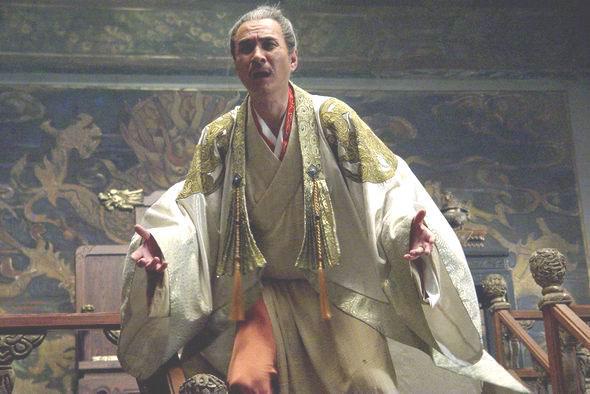
On 8 February 1644, the first day of the Chinese New Year, the ministers of the Emperor of Lofty Omens woke before dawn and journeyed through the streets of Beijing. At the break of day, in keeping with tradition that stretched back for centuries, they would greet their 33-year-old ruler, whom the gods had selected to reign over the entire world. Then, the assembled throng would welcome in the new year, the 4341st since China’s first, legendary kings, and entreat the gods and ancestors to bring them good fortune.
The city, however, was quiet. Many of its inhabitants had succumbed to a harsh outbreak of disease the previous year, and according to one diarist, ‘no babies had been born in the city for the previous six months.’ Not all the ministers arrived at the palace on time. Those that did found the gates jammed shut, and were only able to open them with some difficulty. Eventually, they found the Emperor of Lofty Omens, in the Hall of the Central Ultimate. He was weeping.
China was doomed. The Dynasty of Brightness, the Ming, which had ruled the world’s largest nation for centuries, had lost its hold on power. A Confucian scholar would have been scandalised at the low attendance that morning; without a full complement of ministers, how could they perform the necessary ceremonies? But not even the Emperor himself bore a grudge against the absentees, or those who arrived late, wheezing breathless apologies. No amount of prayers and ceremony would change the inevitable, and no sacrifice, however elaborate, would attract the ancestors’ attention from the afterlife.
Besides, the Emperor could not afford it. Ever since the disastrous reign of his father, the nation’s budgets had spiralled wildly out of control. Attempts to curtail imperial luxuries were not enough, fundamental cornerstones of civilization had gone to ruin. The Grand Canal to the south was falling into disrepair, and the postal system had been shut down. Smallpox had wrought havoc among the farming communities, who struggled in vain to tease crops from the earth – though few realised at the time, the middle of the 17th century gripped the world in a mini-ice age. The same weather conditions that were then freezing over the Thames in London were also bringing deadly cold to the lands north of the Great Wall.
The Emperor was fated to fall. While the Great Wall still held, a new enemy struck from within. Starved of food and decimated by disease, a distant inland province rose up in revolt. An army of disaffected soldiers and peasants, began to march on the capital city, led by the rebel Li Zicheng.

Li Zicheng, formerly one of the post-riders who delivered mail along China’s once-great roads, had been obsessed with seizing control of the Empire from his youth. Not even losing an eye in battle dimmed his ardour, as one old prophecy had predicted the Empire would fall to a man with only one eye. His previous dealings with other members of the imperial family had been less than favourable. During his campaigns, he not only killed the Emperor’s uncle the Prince of Fu, but drank his blood, mixing it into his venison broth. Li Zicheng was the leader of a horde of almost 100,000 soldiers, boiling across the country towards Beijing, gathering still greater numbers as peasants flocked to its tax-free banners.
On New Year’s Day, as the Ming Emperor sat sobbing in his palace, Li Zicheng announced his intention to found a new dynasty. The Dynasty of Brightness, he said, had fallen. Long live the Da Shun, the Dynasty of Great Obedience.
With the usurper Li Zicheng advancing ever closer to Beijing, the Emperor of Lofty Omens knew it was time for drastic measures. Drunk and disoriented, he ordered for the Ming Heir Apparent to be smuggled out of the city. He gathered the rest of his family about him and informed them that it was time to die. Some of his wives and concubines had already committed suicide, and were found hanged or poisoned in their chambers. Others had fled. There was no such option for the immediate family of the Emperor, who attacked his own children with a sword. The 15-year-old Princess Imperial held out her right arm to stay his attack, and the Emperor hacked it off. The maimed girl fled screaming through the halls, leaving a trail of blood. Her younger sisters were not so lucky, and both died where they stood, stabbed by their own father. The Emperor then went to the base of nearby hill, where he wrote a final  message in his own blood, before hanging himself as Li Zicheng’s army drew closer. Later writers would claim the Emperor’s last words blamed his ministers and his own ‘small virtue’ for the collapse of the Ming Dynasty, and exhorted the rebels to spare his people from suffering. In fact, the Emperor’s bleeding finger simply traced the plaintive, spidery characters ‘Son of Heaven.’ His body lay undiscovered for three days.
message in his own blood, before hanging himself as Li Zicheng’s army drew closer. Later writers would claim the Emperor’s last words blamed his ministers and his own ‘small virtue’ for the collapse of the Ming Dynasty, and exhorted the rebels to spare his people from suffering. In fact, the Emperor’s bleeding finger simply traced the plaintive, spidery characters ‘Son of Heaven.’ His body lay undiscovered for three days.
Extract from Coxinga and the Fall of the Ming Dynasty, by Jonathan Clements, available in the UK and US.
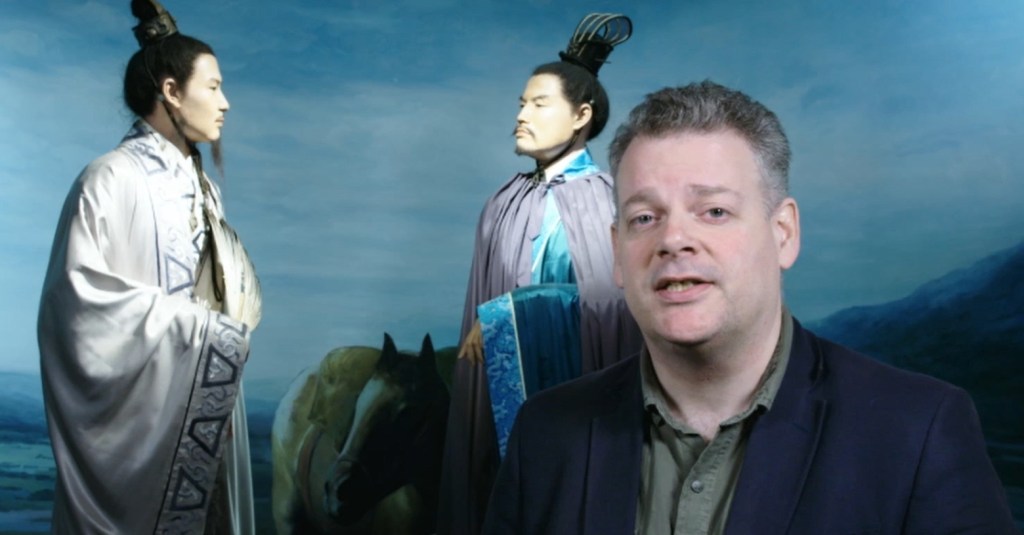
After successfully chasing the Mongols out of China, the first emperor of the Ming dynasty, Hongwu, tried to erase his humble, rebellious origins by aspiring to be the perfect ruler. And the perfect emperor needed an ideal capital, so he planned one out in Nanjing. The Nanjing Museum is set in the grounds of his palace, a Forbidden City manqué climbing up the side of a hill with a view of the city walls. And since it’s Monday and the museum is closed to the public, we have it to ourselves except for the fidgeting security guards, and a man from the propaganda office, who is putting a brave face on the fact that he is incredibly bored.
Nanjing’s history goes back to the Stone Age, although the museum concentrates on those moments in Chinese history when it was a capital. When the Han dynasty fell in 220 AD, China spent 350 years in a state of disunity, and Zhuge Liang, a ministerial adviser to one of the upstart kingdoms, recommended Nanjing as the ideal location for capital. It had, he said, mountains around it like a crouching tiger and a coiling dragon, and the river Yangtze acted as a natural moat. When northern China fell to barbarian invaders, the nomads couldn’t make it south of the Yangtze, turning Nanjing into a bastion of old culture and a guardian of Chinese heritage.
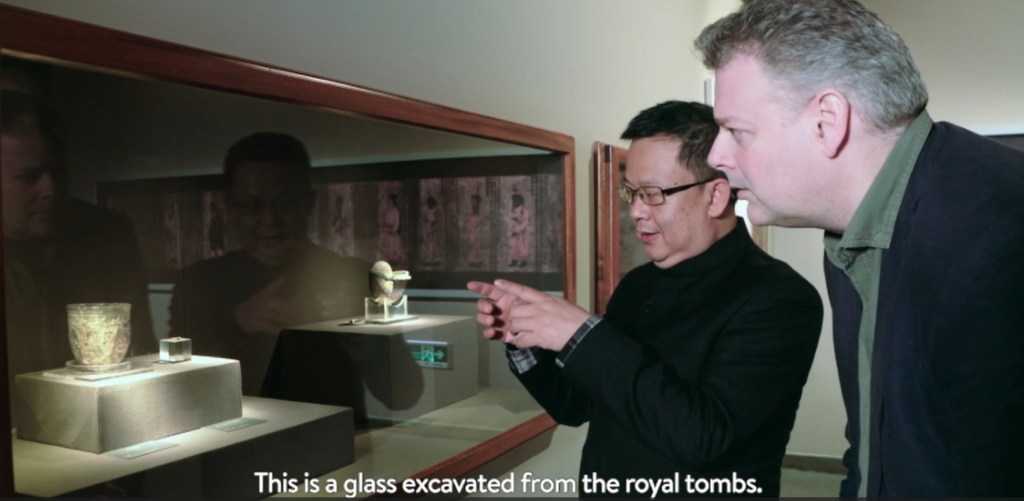
I have to do pieces to camera in front of the museum’s various displays – Nanjing has been a sort of capital of China for several cumulative centuries, but for most of those times, it was in one of the squib dynasties of the Dark Ages, when it was only really the capital not of an empire, but of a glorified kingdom in the lower Yangtze area. When even educated foreigners are unlikely to be able to name half a dozen major Chinese dynasties, it is tough to run through the likes of the Liu Song, the Chen and the Southern Qi, none of which lasted for more than a few decades, but all of which were centred on Nanjing, quite probably the greatest city in the world at the time. I pick a giant stone pixiu, a chimera-like mythological beast from the squib emperors’ tombs, as a means of pointing out that they achieved some big things and had an enduring culture, even if the family at the top switched around a few times.
I am actually a huge fan of the Six Dynasties — I love it as one of those neglected periods in Chinese histories, and I am a sad enough Six Dynasties nerd that I could indeed be found on the day of the release of the Cambridge History of China: Six Dynasties, waiting outside the Cambridge University Press bookshop for it to open. Good job, too, because they only had one copy in stock of their new £115 monster, so I got in there ahead of the rush.
We point the camera at ceramic, open-mouthed rhinos, made as bespoke piss-pots for Six Dynasties emperors, as well as fragments of Nanjing’s famous Porcelain Tower, a diorama of the old Yuecheng (Fortress of the Viet) built on the future site of Nanjing by the king of Wu to watch over the conquered 5th century BC kingdom of Yue. The security guards lurk glumly, ordered to be on their feet whenever we are around, and hence forced to be on their feet all day.
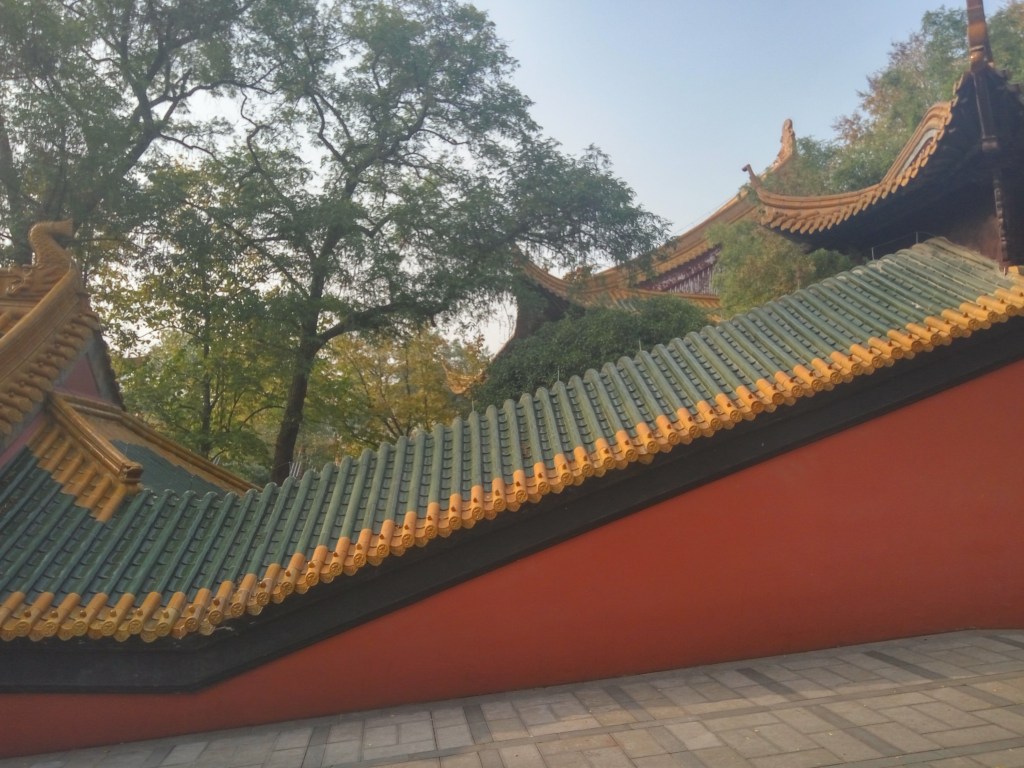
A bunch of them sit around in their office smoking fags, leading to the fantastically Chinese moment when their closed circuit TV monitors show our director lighting up behind the toilets in the park, and they rush out to tell her that the whole facility is Non-Smoking. Except, apparently, their office, which has so much smoke billowing out of it that you would be forgiven for thinking it was on fire.
The curator Wu Tian starts off a little timid and unsure of himself. But we get him to show us some of his favourite pieces in the museum, and he starts talking with true passion and excitement about truly weird items. One is a bit of road with ruts worn by four hundred years of ox-carts. Another looks like a mini bedpan, but turns out to be a Six Dynasties iron for smoothing clothes flat. Another looks like half a toilet seat on legs, but is instead a sort of arm rest for people on divans in a culture that has yet to invent the chair.
“I suppose not,” I wonder aloud, “because after all, the chair is a Song-dynasty innovation.”
Mr Wu stands bolt upright, as if poked with a cattle prod. Not for the first time on this shoot, the fact that I am not only listening, but can say something relevant in Chinese makes his eyes stick out on stalks, and suddenly he is twice as animated and excited. The interview goes swimmingly well, since he has worked out that I am not some fat white sock puppet, but an actual historian who knows his Han from his Ming. So he chats excitedly about Dark Age hairstyles and roof tiles, and saves the best till last.
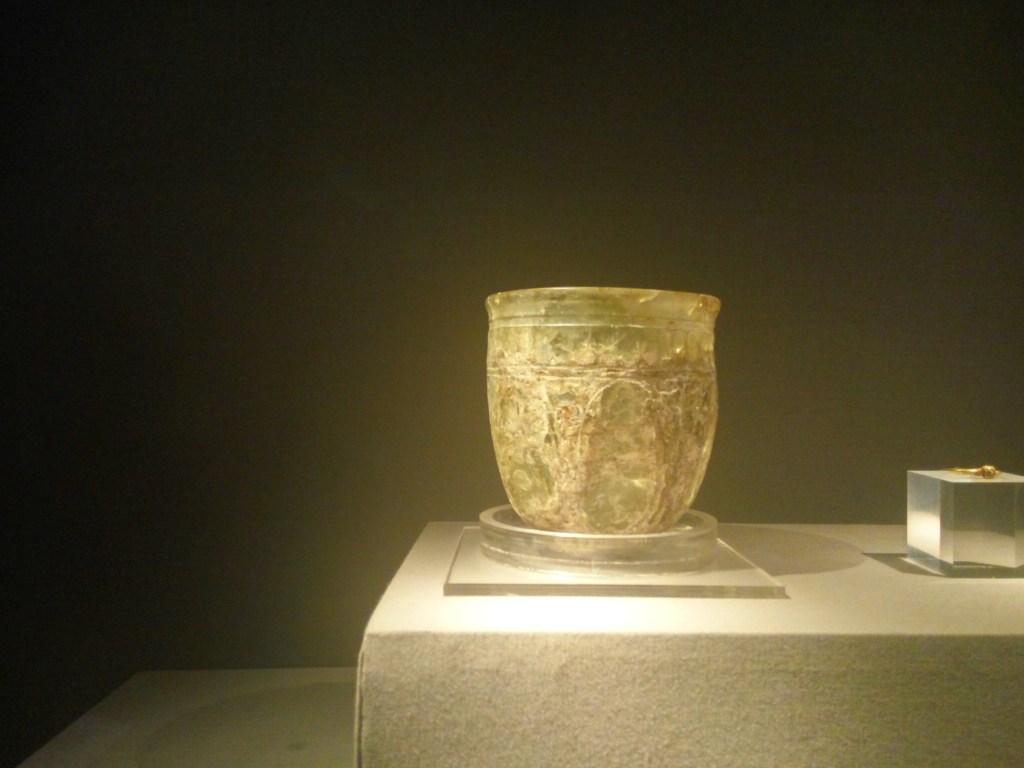
“Now this, he says, “is my favourite. We found it smashed into a hundred pieces in a Nanjing grave, and we put it back together. It’s a glass cup, from a time when China didn’t have any glass blowers. We think it came from the Eastern Roman Empire, by sea, and ended up in Guangzhou, from where it made its way north to Nanjing as some sort of curio to impress visitors. The grave was a wealthy merchant’s, but this isn’t the only Roman glass we’ve found in Nanjing. It’s actually the twelfth.”
Camera A on the interviewee, B-roll on the interviewer, me interjecting with actual questions that make it clear we are not some bored school party fubbing with our phones, but a bunch of people who have come to Nanjing specifically to talk about the Six Dynasties, the squib dynasties that everybody usually ignores. Mr Wu is very pleased, and thanks us profusely for actually knowing what he is talking about. I get the feeling it’s a rare occurrence.
Jonathan Clements is the author of A Brief History of China. These events appear in Route Awakening S05E06 (2019).
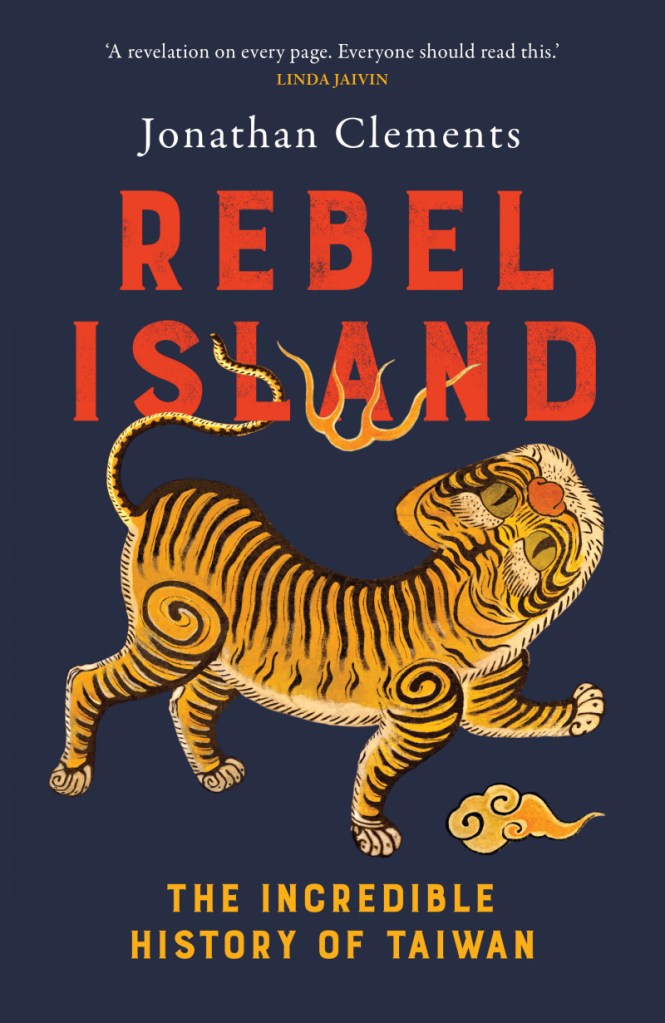
“A revelation on every page. Everyone should read this.” – Linda Jaivin, author of The Shortest History of China
“Rich with fascinating details, Jonathan Clements’ Rebel Island is an engaging introduction to the complicated and astonishing history of Taiwan.” – Shawna Yang Ryan, author of Green Island
“Taiwan has become a stresspoint of global geopolitics, and Jonathan Clements has done the world a favour with his indispensable account of its complex history. This illuminating and endlessly fascinating book can’t help but change the way we see the Taiwanese people and what they have built.” – Clive Hamilton, author of Hidden Hand
“Rebel Island narrates the long arc of Taiwan’s history in vivid prose and with admirable sensitivity to contemporary views regarding the island’s politically charged past. Clements provides an even-handed treatment of controversies old and new, while engaging readers with revealing anecdotes and his trademark wit.” – Paul D. Barclay, author of Kondo the Barbarian
Once dismissed by the Kangxi Emperor as nothing but a ‘ball of mud’, Taiwan has a modern GDP larger than that of Sweden, in a land area smaller than Indiana. It is the last surviving enclave of the Republic of China, a lost colony of Japan, and claimed by Beijing as a rogue province — merely the latest chapters in its long history as a refuge for pirates, rebels, settlers, and outcasts.
Jonathan Clements examines the unique conditions of Taiwan’s archaeology and indigenous history, and its days as a Dutch and Spanish trading post. He delves into its periods as an independent kingdom, Chinese province, and short-lived republic, and the transformations wrought by 50 years as part of the Japanese Empire. He examines the traumatic effects of its role as a lifeboat in 1949 for two million refugees from Communism, and the conflicts emerging after the suspension of four decades of martial law, as its people debate issues of self-determination, independence, and home rule.
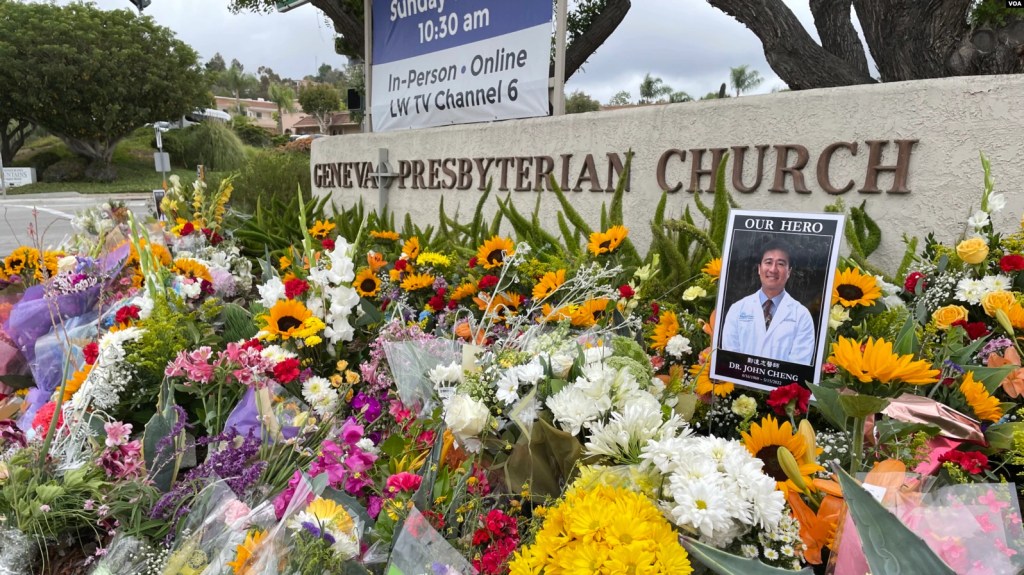
On 15th May 2022, a sixty-eight-year-old man turned up late for a church service at the Geneva Presbyterian Church in Laguna Woods, California, and sat through the ceremony conspicuously reading a newspaper at the back. When the service ended, he chained and glued the doors shut. He then pulled out a gun and started shooting into the crowd of aging Taiwanese people, in the middle of a church luncheon. One man, Dr John Cheng, heroically charged the shooter, but was shot dead. Having run out of bullets, the gunman paused to reload, at which point pastor Billy Chang hit him with a chair. Several other attendees then piled onto him, holding him down while he was restrained with an extension cord.
The incident was swiftly over, with one death and five people with gunshot wounds. The shooter was subsequently indicted on 98 federal charges, including murder, attempted murder with intent, weapons charges, transporting explosives (he had brought a bunch of Molotov cocktails) and hate crime.
Media reporting on the incident was confused and multi-faceted. Some outlets justifiably termed it a “hate crime” – an act by an individual who had singled out a group of victims specifically on the basis of their ethnicity or beliefs. But the shooter was himself a “Taiwanese” man, David Chou – born in Taiwan to parents who were refugees from the mainland. He had a master’s degree from an American university, and a former career as a translator. In later life, he had suddenly become an outspoken critic of “Taiwanese people”, referring not to his own kind, who were simply born there, but specifically to those who rejected the notion of themselves as “Chinese”. Earlier that year in Las Vegas, he had unfurled a banner calling for “ERADICATION OF PRO-INDEPENDENCE DEMONS.” Before embarking upon his shooting spree in Orange County, he had posted a manifesto to a Chinese-language newspaper, titled Diary of the Independence-Slaying Angel.
The incident was a shocking example of the way that foreign politics can suddenly manifest overseas, the playing out of decades of East Asian history in what first appears to be yet another crazy guy with a gun on the American news. Chou was, indeed, yet another crazy guy with a gun – but saw himself as the tip of the spear for a struggle that has played out in Taiwan for the last seventy years. As Wendy Cheng argues in her book Island X, it was also nothing new. Since the 1950s, America has been a crucible and a cradle for Taiwanese politics, and a battleground between its factions.
The name “Island X” derives from the codename given to Taiwan in the wartime training programme run by George Kerr, preparing a group of Allied officers for the island’s invasion and takeover. Cheng employs it in a broader sense, discussing the way in which the Nationalist government on Taiwan was so beholden to America that its very education system fatefully funnelled its best students towards the American university system. “English was taught beginning in junior high,” she writes, “and students were taught to ‘specialise in skills needed in the American job market’.”
A 1949 report by the US National Security Council suggested that the “indigenous population has a strong sense of regional autonomy… The Formosans are anti-Chinese, as well as anti-Japanese, and would welcome independence under the protection of the United States or the UN.” However, it went on to point out that fifty years of suppression under the Japanese, as well as the savage purges of the Nationalist government in the late 1940s, has left any potential independence movement rudderless, leaderless and “politically inarticulate.” Intentionally or otherwise, the United States then spent a generation nurturing not only the future leaders of the Taiwanese establishment, but their future opposition.
It was the hope of the American advisers on Taiwan that sending students back to the States would inculcate them with liberal values and support for the Free West. In some cases, this is what happened. In others, a sojourn in the US exposed Taiwanese scholars not only to life in America, but America’s own political turmoil, and the right of Americans to freely speak up about their misgivings. Like many other political movements both within the US and overseas, they were inspired by the United States’ own origin story – as a revolutionary democracy, taking a stand on broad philosophical issues, and demanding release from the bonds of colonial or imperial rule. As one student put it, it gave her “opportunities [to] actually identify myself as Taiwanese.”
They also became painfully aware that the Nationalist government on Taiwan was entirely buttressed by the United States. “They reached the island aboard American transports,” she quotes George Katsiaficas, “and American arms and subsidies enabled them to stay.” Such observations led activists to question the degree to which Taiwan was anything but an American airstrip in the Cold War.
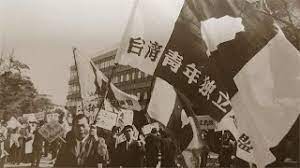
To describe things in cheekily Maoist terms, America itself was in a state of “permanent revolution”, ready to self-correct and self-criticise, amending its own Constitution to reflect changing attitudes, and with a populace not above taking to the streets to protest about civil rights or the war in Vietnam. Many Taiwanese students were caught up in such protests, what Cheng calls a “contradictory but fantastic thing,” only to discover that their involvement in left-wing activism would lead to their cards being marked back home. Cheng’s own father was one such student, told that there would be no professorial job for him when he returned to Taiwan. Effectively blacklisted, he chose to remain in the United States. Another student observed that it took just six to eight hours’ informed conversation after arriving in America for him to cast aside “twenty-four years of Chinese education,” and to become an ardent supporter of Taiwanese independence.
Such activism could take extreme forms on both sides. In 1970, the Taiwan-born PhD student Peter Huang attempted to assassinate Chiang Kai-shek’s son, Chiang Ching-kuo, at the lavish Plaza Hotel in New York. Shoved aside by a bodyguard, he succeeded only in shooting the hotel’s revolving doors, shouting: “LET ME STAND UP LIKE A TAIWANESE!” as he was dragged away.

Cheng’s book chronicles the aftermath of the White Terror on Taiwan, and the undeniable fact that the surveillance and control of Chinese citizens extended far beyond the island itself, under martial law from 1949-87, to the activities of Chinese people abroad, particularly in the United States of America. For if you were a Taiwanese exchange student at an American university in the third quarter of the twentieth century, you were subject to the unwelcome intrusions of a party cadre, not from the Red Book-waving People’s Republic, but from the “free” government of the Republic of China on Taiwan.
These paid informants or “professional students” were the strongmen (and women) of Taiwan’s “Rainbow” project, so named because the word for rainbow, caihong, is also a homonym for “destroy the Reds.” And by “Reds”, they did not merely mean the proportion of students who were taken in by the rhetoric of the PRC – some did indeed embrace the ideals of the mainland regime, even in the midst of the Cultural Revolution – but anyone challenging the one-party rule of the Kuomintang on Taiwan.
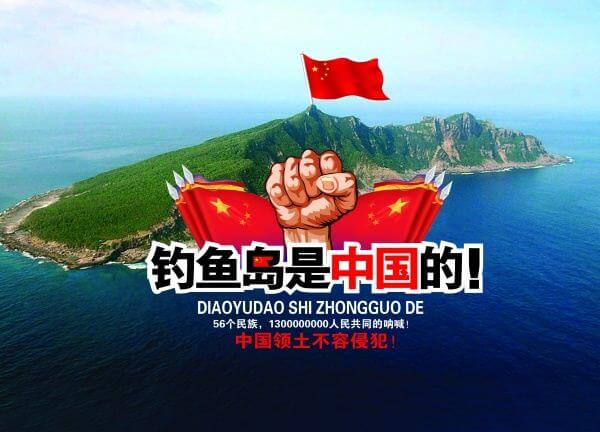
In 1971, the American hosts let down their Taiwanese guests in a spectacular fashion, by proposing to hand over the Diaoyu (Senkaku) islands off the coast of Taiwan to Japan. This has famously become one of the few issues that unites both Communist and Republican China, both of which regard the islands as Chinese. Such a betrayal was soon followed by Nixon’s famous visit to China, which set the United States on the path of recognising Beijing, not Taipei, as the rightful government of the country. And it was not merely the Americans who swung towards Beijing – the news propelled a bunch of Taiwanese students in America to give up on Taiwan as well.
Someone participating in the “Protect the Diaoyu Islands” movement, or Bao-Diao turned out to be super-triggering for the Nationalists, who instituted a new “blacker blacklist” that not only barred people from certain jobs or positions in Taiwan, but rendered them stateless. In several case studies, Cheng chronicles the persecution of students on trumped-up charges, their arrests on returning home for having merely participated in a discussion on Taiwanese independence, the removal of their civil rights and the harassment of their families. She also notes a “rash of bombings” in 1979-80 by WUFI, the World United Formosans for Independence, which led to WUFI being added to the State Department’s list of terrorist organisations.
The Taiwanese authorities fought back, also on American soil. In the most infamous incident in 1984, Henry Liu, a naturalised American journalist who had published a biography critical of Chiang Ching-kuo, was murdered in his own driveway in Daly City, California. He was shot by members of the Bamboo Union Triad, who had been working under orders from Taiwanese military intelligence – a fantastic jackpot of dodgy deals, which, as Stephen Solarz noted, amounted to “frightening examples of the long arm of Taiwanese martial law tearing at the fabric of American democracy.”
Cheng’s book is a fascinating exercise in, as she puts it, “locating Taiwanese-Americans in global history”, and reclaiming the lost stories of a generation of activists and students before it fades away and takes it memories with it. One would be forgiven for thinking that the lifting of martial law on Taiwan, and the subsequent swift rise of the Democratic Progressive Party, moved much of the action back to its homeland, but as the murderous act of David Chou demonstrates, there is no “over there” for Americans of Taiwanese origin if they are not safe in their own churches. The tensions in the Taiwan Strait, over whether Taiwan is part of China or a sovereign island, reach far beyond the local, and indeed, still threaten to engulf us all.
Peter Huang’s words as he was dragged out of the Plaza Hotel would become a touchstone of Taiwanese independence activism. Their most conspicuous appearance is in “Supreme Pain for the Tyrant”, by the death metal band Chthonic, which ends with the words “Let me stand up as a Taiwanese” repeated several times, like a mantra of resistance.
Jonathan Clements is the author of Rebel Island: The Incredible History of Taiwan. Wendy Cheng’s Island X: Taiwanese Student Migrants, Campus Spies and Cold War Activism is published by the University of Washington Press.

Two months after this column (NEO #232) covered the lack of marketing material for Miyazaki’s The Boy and the Heron, suddenly we are overwhelmed with press images.
I am not a fly on the wall of US meetings, but I can well imagine that GKIDS went to Ghibli and said “Okay lads, you’ve had your fun, but the American press is going to get super-tired with only having one publicity image. You’d better give us something sharpish, or we’re not going to have any publicity at all.”
Ghibli have come back with pictures that are fated to become iconic anime posters, with titles like Girl Buttering Toast, Old Ladies Looking at Tins, Man with Giant Moustache and Bunch of Happy Blob Things.
No harm done. Boy and the Heron is a box office success in Japan, and some coverage is even (gasp!) revealing its plot, which I think should be a new game of trying to explain a Miyazaki film badly. “It’s Back to the Future retold with a castle full of man-eating parakeets.” Or “it’s about a man inside a heron, but not in a dodgy way.” And in turn, this makes it possible to do Art books and illustrated chapters, and film guides and so on.

Magazines like NEO have some pictures they can hang their Boy and the Heron puff-pieces on for now. But Ghibli-level obstructionism is increasingly being felt behind the scenes, on the collectors’ editions that risk becoming a lot less collectable. Some readers may already know that many years ago, Ghibli refused to allow Optimum to put a commentary track on Spirited Away because they don’t care for third-party opinions (in this case, mine) on official releases. That’s fair enough, and is their right, but experiences over the last year or so have suggested that other extras are getting increasingly hard to approve.
I don’t just mean in the anime world. Last month, a licensor refused to allow an article to be added a manga volume explaining some of the intricate folkloric references it contained. This was, apparently, because the contract specified that the work had to appear in English exactly as it had been in Japan, with no extra material, even though it would make no sense to non-Japanese people.
I sense that a lot of these proclamations are coming from licensors who are trying to make their own lives easier, like the person who refused to allow me to write a book-length freebie for a well-known anime because she didn’t want to have to read it all.
She asked if I could write less. Be less extra. Which means you get less extras.
Jonathan Clements is the author of Anime: A History. This article first appeared in NEO #234, 2023.

“Ran is a ‘Child of Impurity’, a warrior with the power to exorcise monsters, but only by taking on their curses himself. As a result, he is a toxic figure, shunned by the villagers he defends, doomed to a short life-span when the accumulated poisons eventually overwhelm him. And he has acquired a travelling companion, the perky young bard Torue, who sees in Ran the perfect material for a song cycle. Bereft of inspiration, she hopes to follow him around until a ‘story’ presents itself.” Shelley Pallis, All the Anime.
A nice review up early for Yusuke Osawa’s Poetry of Ran, out today from Titan Manga, and translated by Motoko Tamamuro and me.

Frances has egg in her pants. It turns out that the one our producer took from the pile near the toaster in the hotel was not hard-boiled at all, a fact she only realised when she put it in her pocket and then accidentally sat on it 20 minutes later. She’s washed her clothes in a bucket and is hanging them out to dry in the van. Now we look like a proper Chinese film crew, with laundry drying on the equipment.
Today we are in Linyi, a town I have never heard of, where there is apparently a standing film set. I was looking forward to doing a walking shot in a traditional Chinese town, only to walk around a corner to reveal that all the buildings are two-dimensional flats, and to reveal the whole crew standing there with their boom mikes and fags. But we have been warned that the film set is infested with professional spanners, who make it their life’s work to wander into shot and then demand reimbursement to leave. So instead we are sticking to the main plan, which is to film Luqin opera.

None of us are all that clear about what Luqin opera is. It is something specific to Shandong, but nobody was sober enough last night to Google it. Liu Lili is the perky actress who will explain it all to us, but she doesn’t have a whole lot to say about it, and any goodwill is soon squandered by the crew. I ask her if she has any experience with filming rather than stage acting, and she claims to know the score, but she becomes plainly frustrated when her 90-minute make-up regime is constantly interrupted by lighting changes and backtracks. Nor is she all that keen on putting make-up on me, for that is the sort of job they give to the interns, not the star of the show.
Her dresser arrives at 11 in the morning, striding into the backstage area and asking: “Have you finished yet?” We have barely started, and Miss Liu is already in a strop. I try to draw her out about the pieces of hair she sets on her head, her adornments and her make-up, but she has already retreated into snappy monosyllables.
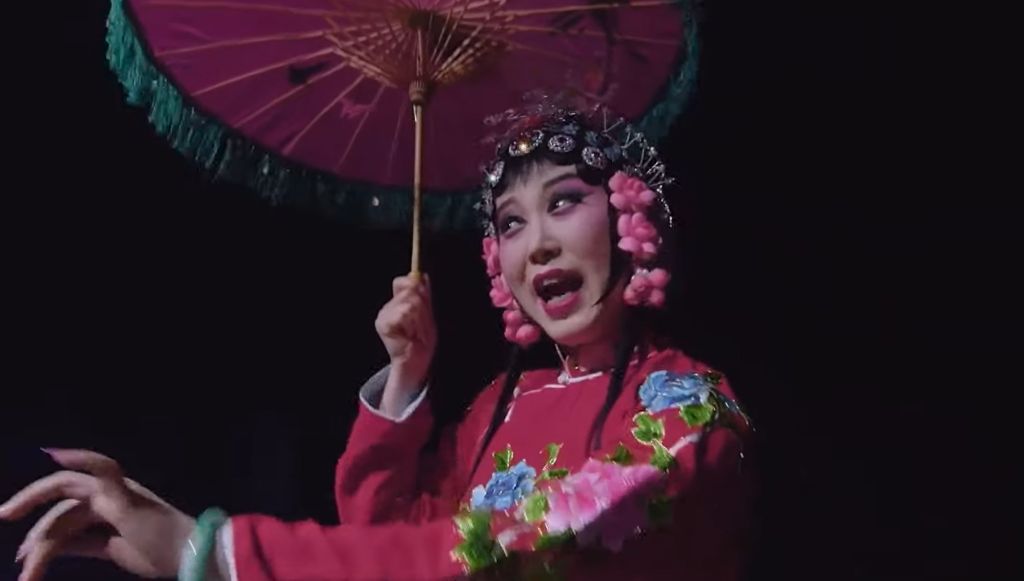
There has been a distinct lack of communication all round. The theatre band arrives ready to play along with Wedding at a Funeral, only to discover that she plans to sing an aria from Meeting My Mother-in-Law. So we have to resort to her miming to a backing track of her own voice as she jauntily rides an imaginary donkey to the tune of an off-key rendition of Knees Up Mother Brown. Then she stuffs me into a bright scarlet scholar’s robe, gets the lippy girl to put on almost all of my make-up, and deigns to be on camera for ten seconds at the end putting the finishing touches to my rouge.
Filming in theatres always seems to go wrong. I blame the clash of two entirely different production regimes in a confined space. The opera troupe have just got back yesterday from a four-province tour, and they are all exhausted. I ask Miss Liu if provincial audiences are well behaved, hoping to hear a diatribe about twats with mobiles, but all I get is an affirmative grunt.
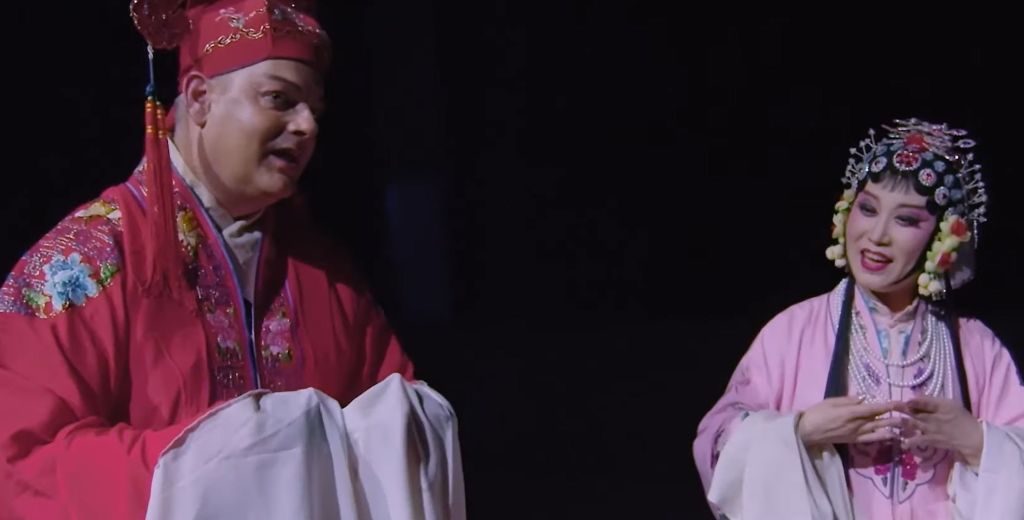
She gives me a line to sing: “Young lady / Thank you for your hospitality / Tiying is a gentleman / Please give him your consent” or something like that. I am able to memorise the line itself and the tune very fast, but once the band get involved there is a whole set of alien meters and pauses that interfere. Sometimes a line begins on the beat. Sometimes it begins half a beat behind it, seemingly at random. The band’s job in Chinese opera is to follow the singers, not the other way around, so a gaggle of musicians with pained expressions struggle to work out where I am going with my lyrics. I keep my eyes fixed on the lady who smacks the little harpy thing with hammers, because she is mouthing along with the words, and I can take a few cues from her.
It’s enough. We get something in the can, which we can stretch with a sarcastic voice-over. I am fighting impossible conditions, done up like Julian Clary in a pair of bathroom curtains, wailing what appears to be two different tunes at once, in Chinese, while two cameramen circle around me and a bunch of musicians make a noise like a piano falling down some stairs.
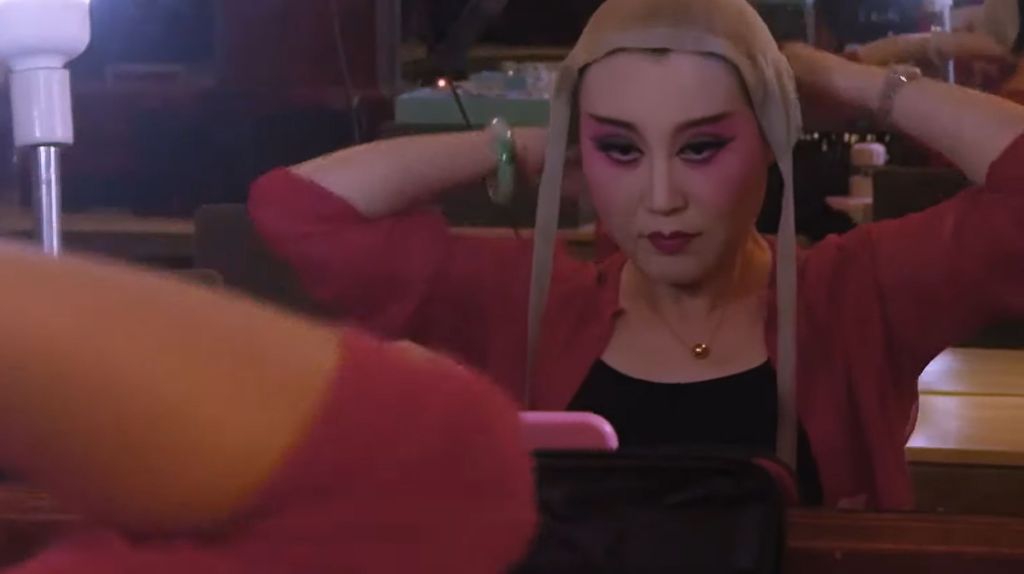
We chat to the band and Miss Liu introduces the musicians, including the man who plays the Luqin, a supposedly unique instrument in Shandong that looks like a cross between a lute and a mandolin. He hands it to me to twang, and I say to the camera. “I can’t actually play any instruments. You might as well give a computer to a monkey.”
And cut. That’s my last shot of the production. Although the crew are filming tomorrow morning at the Jinan fish market, I am done. Tomorrow, I can put on a clean, non-continuity shirt for the first time in two weeks, and wait for the evening train to Beijing.
There is no soap in the bathroom. I get as much of the make-up off as I can, but it’s difficult around the eyes.
“You’re less Julian Clary now,” says the director. “More Gary Numan.”
Jonathan Clements is the author of Confucius: A Biography. These events occurred during the filming of Shandong: Land of Confucius (2018).